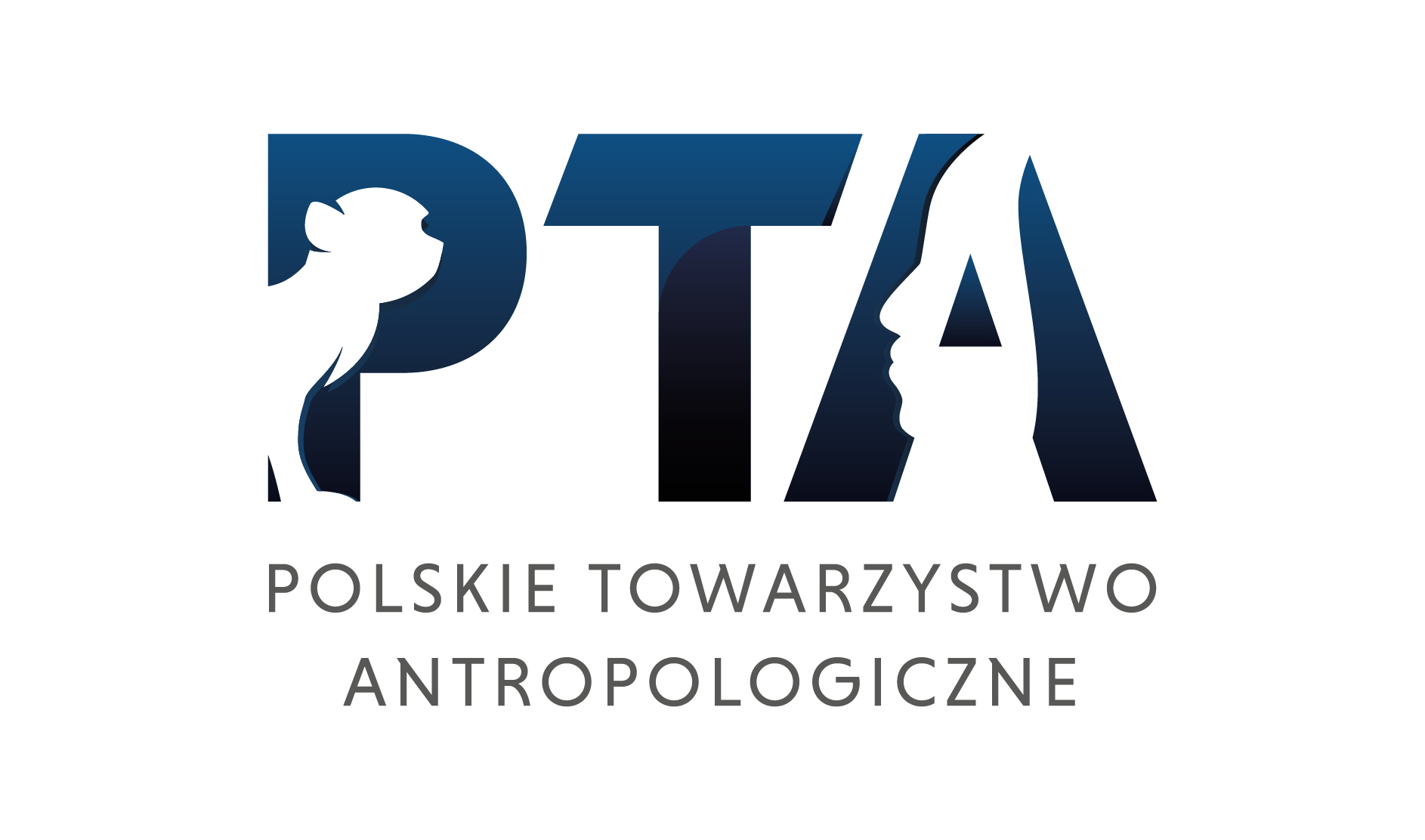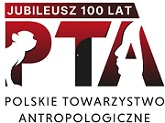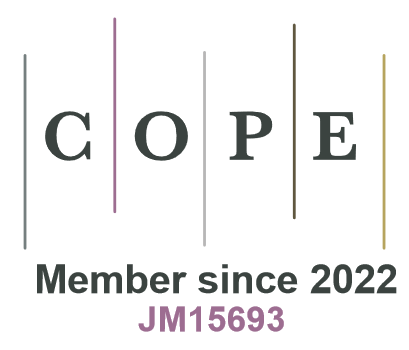Revisiting the cranial variability of the Dmanisi hominins
DOI:
https://doi.org/10.18778/1898-6773.87.2.06Keywords:
Homo erectus, Homo georgicus, Homo caucasi, paleoanthropologyAbstract
The Dmanisi specimens represent the most diverse contemporaneous hominin fossils found at one single site and are key in understanding the first out -of- Africa dispersal and the origins of Homo erectus. Due to these reasons, they have]e been the focus of many studies in paleoanthropology in the last 30 years. However, there has not been any consensus on how to classify these fossils, nor has it been clarified how many species were co-living at that site. In this article, we aim to revisit the subject and contribute further to the discussion.
Downloads
References
Agustí J. 2018. Evolution Of The ‘Homo’ Genus: New Mysteries And Perspectives. Mètode Science Studies Journal 8:71–77. https://doi.org/10.7203/metode.8.9308
View in Google Scholar
DOI: https://doi.org/10.7203/metode.8.9308
Arsuaga JL, Martínez I, Gracia A, Lorenzo C. 1997. The Sima de los Huesos crania (Sierra de Atapuerca, Spain). A comparative study. J Hum Evol 33:219–281. https://doi.org/10.1006/jhev.1997.0133
View in Google Scholar
DOI: https://doi.org/10.1006/jhev.1997.0133
Berger LR, De Ruiter DJ, Churchill SE, Schmid P, Carlson KJ, Dirks PH, Kibii JM. 2010. Australopithecus sediba: a new species of Homo-like australopith from South Africa. Science 328:195–204. https://doi.org/10.1126/science.1184944
View in Google Scholar
DOI: https://doi.org/10.1126/science.1184944
Darroch JN, Mosimann JE. 1985. Canonical and principal components of shape. Biometrika 72(2):241–252. https://doi.org/10.1093/biomet/72.2.241
View in Google Scholar
DOI: https://doi.org/10.1093/biomet/72.2.241
Ferring R, Oms O, Agustí J, Berna F, Nioradze M, Shelia T, et al. 2011. Earliest human occupations at Dmanisi (Georgian Caucasus) dated to 1.85–1.78 Ma. PNAS 108(26):10432–10436. https://doi.org/10.1073/pnas.1106638108
View in Google Scholar
DOI: https://doi.org/10.1073/pnas.1106638108
Gabunia L, Vekua A, Lordkipanidze D, Swisher C, Ferring R, Justus A, et al. 2000. Earliest Pleistocene Hominid Cranial Remains from Dmanisi, Republic of Georgia: Taxonomy, Geological Setting, and Age. Science. 288 (5468): 1019–1025. https://doi.org/10.1126/science.288.5468.1019
View in Google Scholar
DOI: https://doi.org/10.1126/science.288.5468.1019
Gabunia L, De Lumley MA, Vekua A, Lordkipanidze D, De Lumley H. 2002. Découverte dun nouvel hominidé a Dmanissi (Transcaucasie, Géorgie). Comptes Rendus Palevol 1:242– 253. http://dx.doi.org/10.1016/S1631-0683(02)00032-5
View in Google Scholar
DOI: https://doi.org/10.1016/S1631-0683(02)00032-5
Garcia T, Féraud G, Falguères C, De Lumley H, Perrenoud C, Lordkipanidze D. 2010. Earliest human remains in Eurasia: new 40Ar/39Ar dating of the Dmanisi hominid-bearing levels, Georgia. Quaternary Geochronology 5(4):443–451. https://doi.org/10.1016/j.quageo.2009.09.012
View in Google Scholar
DOI: https://doi.org/10.1016/j.quageo.2009.09.012
Guipert G, De Lumley MA, De Lumley H. 2014. Restauration virtuelle d’Arago 21. Comptes Rendus Palevol 13(1):51–59. http://dx.doi.org/10.1016/j.crpv.2013.07.004
View in Google Scholar
DOI: https://doi.org/10.1016/j.crpv.2013.07.004
Hubbe M, Harvati K, Neves W. 2011. Paleoamerican morphology in the context of European and East Asian late Pleistocene variation: Implications for human dispersion into the new world. AJBA 144:442–453. https://doi.org/10.1002/ajpa.21425
View in Google Scholar
DOI: https://doi.org/10.1002/ajpa.21425
Isaac NJ, Mallet J, Mace GM. 2004. Taxonomic inflation: its influence on macroecology and conservation. Trends Ecol Evol 19(9):464–469. https://doi.org/10.1016/j.tree.2004.06.004
View in Google Scholar
DOI: https://doi.org/10.1016/j.tree.2004.06.004
Kaifu Y, Aziz F, Indriati E, Jacob T, Kurniawan I, Baba H. 2008. Cranial morphology of Javanese Homo erectus: new evidence for continuous evolution, specialization, and terminal extinction. J Hum Evol 55(4):551–580. https://doi.org/10.1016/j.jhevol.2008.05.002
View in Google Scholar
DOI: https://doi.org/10.1016/j.jhevol.2008.05.002
Laird MF, Schroeder L, Garvin HM, Scott JE, Dembo M., Radovčić D. et al. 2017. The skull of Homo naledi. J Hum Evol 104:100–123. https://doi.org/10.1016/j.jhevol.2016.09.009
View in Google Scholar
DOI: https://doi.org/10.1016/j.jhevol.2016.09.009
Lordkipanidze D, Jashashvili T, Vekua A, De León MSP, Zollikofer CP, Rightmire GP, et al. 2007: Postcranial evidence from early Homo from Dmanisi, Georgia. Nature 449(7160):305–310. https://doi.org/10.1038/nature06134
View in Google Scholar
DOI: https://doi.org/10.1038/nature06134
Lordkipanidze D, Ponce De León MS, Margvelashvili A, Rak Y, Rightmire GP, Vekua A, Zollikofer CP. 2013. A complete skull from Dmanisi, Georgia, and the evolutionary biology of early Homo. Science 342(6156):326–331. https://doi.org/10.1126/science.1238484
View in Google Scholar
DOI: https://doi.org/10.1126/science.1238484
Lordkipanidze D. 2017. The History of Early Homo. In: M Tibayrenc, and FJ Ayala (eds.). On Human Nature: Biology, Psychology, Ethics, Politics, and Religion. Academic Press. pp. 45–54.
View in Google Scholar
Lordkipanidze D, Vekua A, Ferring R, Rightmire GP, Agusti J, Kiladze G, et al. 2005. The earliest toothless hominin skull. Nature 434 (7034):717–718. https://doi.org/10.1038/434717b
View in Google Scholar
DOI: https://doi.org/10.1038/434717b
Lordkipanidze D, Vekua A, Ferring R, Rightmire GP, Zollikofer CP, Ponce De León MS, et al. 2006. A fourth hominin skull from Dmanisi, Georgia. The Anatomical Record Part A. 288A(11):1146–1157. https://doi.org/10.1002/ar.a.20379
View in Google Scholar
DOI: https://doi.org/10.1002/ar.a.20379
Lubsen KD, Corruccini RS. 2011. Morphometric analysis of the Herto cranium (BOU-VP-16/1): Where does it fit?. Journal of Contemporary Anthropology 2(1):1–16.
View in Google Scholar
Meiri S, Mace GM. 2007. New taxonomy and the origin of species. PLoS Biology 5(7):e194. https://doi.org/10.1371/journal.pbio.0050194
View in Google Scholar
DOI: https://doi.org/10.1371/journal.pbio.0050194
Mgladze A, Lordkipanidze D, Moncel M, Despriee J, Chagelishvili R, Nioradze M, Nioradze G. 2011. Hominin occupations at the Dmanisi site, Georgia, Southern Caucasus: Raw materials and technical behaviours of Europe’s first hominins”. J Hum Evol 60(5):571–596. https://doi.org/10.1016/j.jhevol.2010.10.008
View in Google Scholar
DOI: https://doi.org/10.1016/j.jhevol.2010.10.008
Neves WA, Bernardo DV. 2011. The first hominin of Europe: a multivariate exploratory analysis. Revista de Arqueologia 24(1):102–110. http://dx.doi.org/10.24885/sab.v24i1.317
View in Google Scholar
DOI: https://doi.org/10.24885/sab.v24i1.317
Ni X, Ji Q, Wu W, Shao Q, Ji Y, Zhang C, et al. 2021. Massive cranium from Harbin in northeastern China establishes a new Middle Pleistocene human lineage. The Innovation 2(3): 100130. https://doi.org/10.1016/j.xinn.2021.100130
View in Google Scholar
DOI: https://doi.org/10.1016/j.xinn.2021.100130
Rightmire GP. 1990. The evolution of Homo erectus: comparative anatomical studies of an extinct human species. New York: Cambridge University Press, p. 157–168.
View in Google Scholar
DOI: https://doi.org/10.1017/CBO9780511525674
Rightmire PG. 1996. The human cranium from Bodo, Ethiopia: evidence for speciation in the Middle Pleistocene? J Hum Evol 31(1):21–39. http://dx.doi.org/10.1006%2Fjhev.1996.0046
View in Google Scholar
DOI: https://doi.org/10.1016/S0047-2484(96)90046-9
Rightmire GP, De León MSP, Lordkipanidze D, Margvelashvili A, Zollikofer CP. 2017. Skull 5 from Dmanisi: Descriptive anatomy, comparative studies, and evolutionary significance. J Hum Evol 104:50–79. https://doi.org/10.1016/j.jhevol.2017.01.005
View in Google Scholar
DOI: https://doi.org/10.1016/j.jhevol.2017.01.005
Rightmire GP, Margvelashvili A, Lordkipanidze D. 2018. Variation among the Dmanisi hominins: Multiple taxa or one species? Am J Phys Anthropol. 168(3): 481–495. https://doi.org/10.1002/ajpa.23759
View in Google Scholar
DOI: https://doi.org/10.1002/ajpa.23759
Scardia G, Neves WA, Tattersall I, Blumrich L. 2020. What kind of hominin first left Africa?. Evolutionary Anthropology: Issues, News, and Reviews 30(2):122–127. https://doi.org/10.1002/evan.21863
View in Google Scholar
DOI: https://doi.org/10.1002/evan.21863
Schwartz JH, Tattersall I, Zhang C. 2014. Comment on “A Complete Skull from Dmanisi, Georgia, and the Evolutionary Biology of Early Homo”. Science 344:360. https://doi.org/10.1126/science.1250056
View in Google Scholar
DOI: https://doi.org/10.1126/science.1250056
Skinner MM, Gordon AD, Collard NJ. 2006. Mandibular size and shape variation in the hominins at Dmanisi, Republic of Georgia. J Hum Evol 51(1):36–49. https://doi.org/10.1016/j.jhevol.2006.01.006
View in Google Scholar
DOI: https://doi.org/10.1016/j.jhevol.2006.01.006
Slowikowski K. 2023. ggrepel: automatically position non-overlapping text labels with “ggplot2”. Available at: https://github.com/slowkow/ggrepe
View in Google Scholar
Stringer CB, Howell FC, Melentis JK. 1979. The significance of the fossil hominid skull from Petralona, Greece. Journal of Archaeological Science 6(3):235–253. http://dx.doi.org/10.1016/0305-4403(79)90002-5
View in Google Scholar
DOI: https://doi.org/10.1016/0305-4403(79)90002-5
Vekua A, Lordkipanidze D. 2010. Dmanisi (Georgia) – Site of Discovery of the Oldest Hominid in Eurasia. Bulletin of the Georgian National Academy of Sciences 4(2):158–164.
View in Google Scholar
Vekua A, Lordkipanidze D, Rightmire GP, Agusti J, Ferring R, Maisuradze G, et al. 2002. A new skull of early Homo from Dmanisi, Georgia. Science 297(5578):85–89. https://doi.org/10.1126/science.1072953
View in Google Scholar
DOI: https://doi.org/10.1126/science.1072953
Venables WN, Ripley BD. 2002. Modern Applied Statistics with S. Statistics and Computing, Springer. Weidenreich F. 1936. The mandibles of Sinanthropus pekinensis: A comparative study. Paleontologia Sinica, Ser. D 7:1–162.
View in Google Scholar
DOI: https://doi.org/10.1007/978-0-387-21706-2
Wickham H. 2016. ggplot2: Elegant Graphics for Data Analysis. Springer-Verlag New York.
View in Google Scholar
DOI: https://doi.org/10.1007/978-3-319-24277-4_9
Zollikofer CP, Ponce De Leon MS, Margvelashvili A, Rightmire GP, Lordkipanidze D. 2014. Response to Comment on “A Complete Skull from Dmanisi, Georgia, and the Evolutionary Biology of Early Homo”.Science344,360–360(2014). https://doi.org/10.1126/science.1250081.
View in Google Scholar
DOI: https://doi.org/10.1126/science.1250081
Downloads
Published
Versions
- 16-09-2024 (2)
- 01-07-2024 (1)
How to Cite
Issue
Section
License

This work is licensed under a Creative Commons Attribution-NonCommercial-NoDerivatives 4.0 International License.
Funding data
-
Fundação de Amparo à Pesquisa do Estado de São Paulo
Grant numbers 2022/13462-1;2023/06224-0








